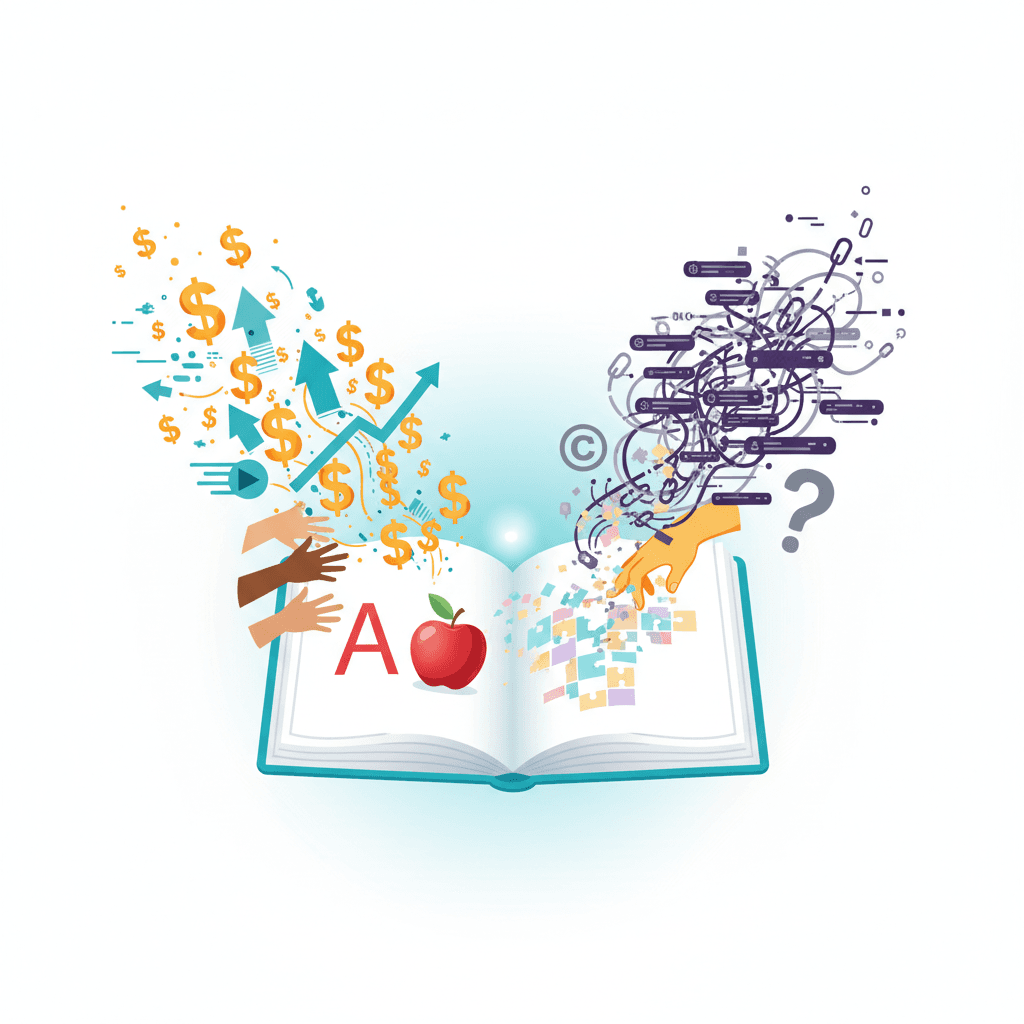New AI Alphabet Book Sparks Fierce Debate on Art, Ethics, and Cost
Beyond speed and savings, an AI-illustrated children's book forces a reckoning over art, ethics, and human creativity.
November 9, 2025

A new children's alphabet book, featuring nearly 1,000 illustrations generated by artificial intelligence, has become a focal point in the escalating debate over the role of AI in creative industries. The project, undertaken by entrepreneur Niels Hoven, serves as a practical case study, illuminating both the significant opportunities and the contentious drawbacks of using AI image generators for commercial artistic purposes. Hoven created the book to serve as a learning tool, tying into a related app offered by his company.[1] The sheer scale of the project, he argues, would have been prohibitively expensive and complex if commissioned from human artists, estimating a cost of around $50,000.[1][2] By using AI, the book was made available as a free PDF and a relatively inexpensive $30 hardcover, a price point Hoven claims would have been closer to $200 with traditional illustration.[1][2] This stark economic contrast highlights the technology's primary appeal while simultaneously fueling a fierce debate among artists, authors, and publishers about the future of creative work.
The primary advantages offered by AI image generators in the publishing world are speed, cost, and accessibility.[3][4][5] For creators like Hoven, the ability to generate a vast number of images in a fraction of the time and at minimal expense makes ambitious projects feasible.[1][2] This efficiency can democratize content creation, allowing authors without artistic skills or the financial resources to hire an illustrator to bring their stories to life visually.[5] Proponents argue that these tools can also serve as a source of inspiration, helping users explore different styles and concepts quickly, which can be particularly useful in the early stages of a project.[3][5] The technology allows for rapid experimentation and the creation of highly customized visuals tailored to specific branding or marketing needs, offering a level of flexibility that traditional methods can struggle to match.[6] For small businesses or independent authors, this represents a significant shift, potentially lowering the barrier to entry for producing illustrated content and flooding the market with new titles.[7][3]
Despite these practical benefits, the commercial use of AI-generated art is fraught with profound ethical and legal challenges that have sparked outrage among creative professionals.[8][9] A central issue is that AI models are trained on vast datasets of existing images, often scraped from the internet without the consent of the original artists.[8][10] This has led to accusations of high-tech plagiarism, with critics arguing that the technology essentially launders stolen art, using the hard work of human creators as raw material without credit or compensation.[8][10][11] This practice has prompted class-action lawsuits against major AI companies.[12] Compounding the ethical dilemma is the unsettled legal landscape. In the United States, the Copyright Office has repeatedly affirmed that works created solely by AI cannot be copyrighted because they lack human authorship.[13][14] This means that books illustrated entirely by AI may have no legal protection against having their images copied or reused, creating significant risks for publishers and authors who invest in such projects.[10][13]
Beyond the legal and ethical quandaries, the quality and artistic merit of AI-generated illustrations remain a significant concern, particularly for children's literature. Critics and artists point out that AI art often lacks the emotional depth, consistency, and "human touch" that are crucial for engaging young readers.[9][3][15] AI-generated images are notorious for bizarre errors, such as characters with malformed hands or objects that float unnaturally, issues that arose in another AI-assisted children's book, "Alice and Sparkle."[8][9] Character consistency from one page to the next is a major hurdle for AI, which can undermine a child's ability to follow a story visually.[15] Human illustrators, by contrast, engage deeply with a manuscript to create a cohesive visual narrative, embedding emotion and subtle details that an algorithm, which merely follows prompts for standalone images, cannot replicate.[15] This has led many to argue that while AI can produce visually striking images, it fails to deliver the meaningful, creative, and carefully crafted illustrations that children deserve and that support their cognitive and emotional development.[10][9]
In conclusion, the emergence of children's books illustrated by AI, such as Hoven's alphabet collection, marks a pivotal moment for the publishing industry. The technology presents a compelling proposition, offering unprecedented speed and cost savings that could reshape how illustrated content is produced. However, these advantages are overshadowed by a host of unresolved and critical problems. The ethical storm surrounding data scraping and artist compensation, the legal uncertainty of copyright protection, and persistent issues with artistic quality and consistency present formidable barriers to widespread adoption. As AI tools continue to evolve, the conversation they have ignited will force a deeper consideration of what we value in creative works: the efficiency of automated production or the irreplaceable nuance and intentionality of human artistry. For now, the debate encapsulated by this new wave of AI-generated books suggests that while the machine can create an image, it has yet to prove it can tell a story with the heart and soul required for children's literature.